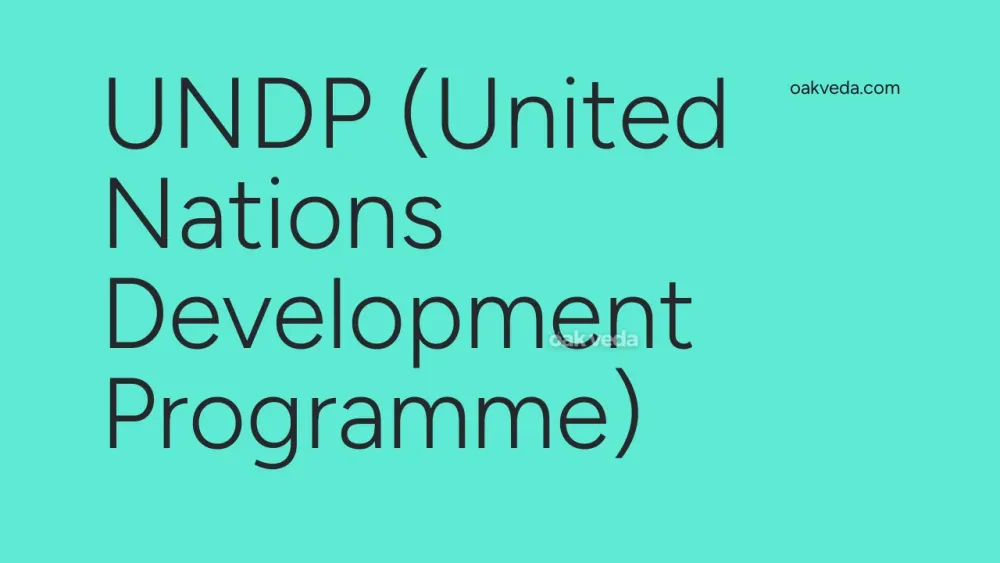
What is the Full Form of UNDP?
The full form of UNDP is the United Nations Development Programme. This global organization plays a crucial role in international development efforts, working towards eradicating poverty and promoting sustainable growth across the world.
What is United Nations Development Programme?
The United Nations Development Programme (UNDP) is a specialized agency within the United Nations system. Established in 1965, it operates in over 170 countries and territories, focusing on sustainable development, democratic governance, and resilience building. The UNDP collaborates with local governments, civil society organizations, and private sector partners to address complex global challenges and improve people's lives.
Origin and Development of UNDP
The UNDP emerged from the merger of two earlier UN organizations: the Expanded Programme of Technical Assistance (EPTA) and the United Nations Special Fund. Since its inception, the UNDP has evolved to become the UN's primary agency for development assistance, adapting its strategies to meet changing global needs and challenges.
How does UNDP work?
The UNDP operates through a network of country offices, regional hubs, and its headquarters in New York City. It is governed by an Executive Board comprising 36 members from both developed and developing nations. The organization works closely with national governments to develop and implement tailored development strategies that align with local priorities and the UN's Sustainable Development Goals (SDGs).
Functions of UNDP
The UNDP's primary functions include:
- Poverty reduction and sustainable development
- Democratic governance and peacebuilding
- Climate change and disaster resilience
- Gender equality and women's empowerment
- Crisis prevention and recovery
Applications of UNDP
The UNDP's work has wide-ranging applications across various sectors:
- Economic development: Supporting job creation and inclusive growth
- Environmental sustainability: Promoting clean energy and conservation efforts
- Governance: Strengthening democratic institutions and processes
- Health: Improving access to healthcare and combating diseases
- Education: Enhancing educational opportunities and skills development
Features of UNDP
Key features of the UNDP include:
- Global presence: Operating in over 170 countries
- Partnerships: Collaborating with governments, NGOs, and the private sector
- Innovation: Utilizing technology and data-driven approaches
- Capacity building: Empowering local communities and institutions
- Knowledge sharing: Facilitating the exchange of best practices and lessons learned
Benefits of UNDP
The UNDP's work brings numerous benefits to communities and nations:
- Reduced poverty and inequality
- Improved access to essential services
- Enhanced environmental sustainability
- Strengthened democratic institutions
- Increased resilience to crises and disasters
Limitations or Challenges of UNDP
Despite its successes, the UNDP faces several challenges:
- Funding constraints: Reliance on voluntary contributions from member states
- Complex political environments: Navigating diverse political landscapes
- Measuring impact: Difficulty in quantifying long-term development outcomes
- Coordination: Aligning efforts with other UN agencies and development partners
Future Developments in UNDP Technology
The UNDP is embracing technological advancements to enhance its impact:
- Data analytics: Leveraging big data for more targeted interventions
- Artificial intelligence: Developing AI-powered solutions for development challenges
- Blockchain: Exploring blockchain applications for transparent aid distribution
- Digital finance: Promoting financial inclusion through digital technologies
FAQs on UNDP Full Form
-
What is the primary goal of the UNDP? The UNDP's primary goal is to eradicate poverty in all its forms while promoting sustainable development.
-
How long has the UNDP been working in India? The UNDP has been operating in India since 1951, focusing on various aspects of human development.
-
What are the UNDP's key focus areas? The UNDP focuses on three main areas: eradicating poverty, accelerating structural transformations for sustainable development, and building resilience to crises and disasters.
-
How does the UNDP contribute to environmental sustainability? The UNDP has supported over 100 countries in eliminating ozone-depleting substances and reducing greenhouse gas emissions. It also participates in projects to address harmful HFCs.
-
Who leads the UNDP? The UNDP is led by an Administrator who oversees a 36-member Executive Board representing both developed and developing nations.
In conclusion, the United Nations Development Programme (UNDP) plays a vital role in global sustainable development efforts. By addressing complex challenges such as poverty, inequality, and climate change, the UNDP continues to make significant contributions to improving lives and building resilient communities worldwide.
You may be interested in:
- IL&FS (Infrastructure Leasing & Financial Services)
- NSS (National Service Scheme): Full Form and Overview
- CID (Crime Investigation Department) Full Form
- DSLR (Digital Single-Lens Reflex) Full Form
- AM and PM (Full Form): Ante Meridiem and Post Meridiem
- APK (Android Package Kit): Full Form and Explained

